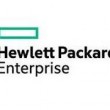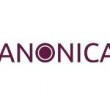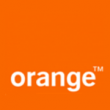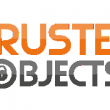

Hewlett Packard Enterprise has announced new innovations that help organisations rapidly, securely and cost-effectively deploy Internet of Things (IoT) devices in wide area, enterprise and industrial deployments. (more…)
December 2, 2016
Posted by: Avadhoot Patil

It’s a common phrase that we’ve all used from time to time. And it’s frustrating. Especially when all of those ‘cooks’ are the equivalent of Michelin Starred experts. But as the vision of the Internet of Things becomes a more ubiquitous reality, many needs and interests have to be unified. (more…)
November 23, 2016
Posted by: Avadhoot Patil

Smart cities promote numerous advantages for the public and organisations alike, improving communication response, remote control potential and innovative interactive experiences for public and private services. (more…)
November 10, 2016
Posted by: Avadhoot Patil

Canonical has released Ubuntu Core 16 for the Internet of Things (IoT), with regular and reliable security updates, and app stores for intelligent connected devices. (more…)
November 4, 2016
Posted by: Avadhoot Patil

Orange Business Services has announced the worldwide launch of Datavenue, its new Internet of Things (IoT) and data analytics modular offer. (more…)
October 25, 2016
Posted by: Avadhoot Patil

CEVA, Inc., a licensor of signal processing IP for smarter, connected devices, has introduced a new lightweight, multi-purpose, processor IP core to streamline the design of cellular-enabled low data rate industrial and consumer loT devices. (more…)
October 12, 2016
Posted by: Avadhoot Patil

Trusted Objects is aiming to provide enhanced security to the Internet of Things (IoT) through its embedded firmware solution for LoRaWAN™ networks. (more…)
September 5, 2016
Posted by: Avadhoot Patil

In July Actility, a provider of low power wide area (LPWA) networking and the company behind the ThingPark LPWA IoT platform, launched the ‘ThingPark Approved’ programme. Actility also welcomed the first partners to achieve ThingPark Approved status. (more…)
September 1, 2016
Posted by: Avadhoot Patil

IoT devices are often built to strive for efficiency. If you remove the huge, power hungry screen of a mobile phone the energy consumption will naturally be lower, write Abilio Marques, a senior software engineer, and Bettina Rubek Slater, the chief operating and chief marketing officer of Pycom, in the second part of their blog. (more…)
July 21, 2016
Posted by: George Malim

Among the billions of devices predicted to make up the Internet of Things (IoT), many demand range and mobility that suggest a low-data-rate GSM connection is the ideal M2M data channel, writes Joerg Koepp, market segment manager at Rohde & Schwarz.
2G offers adequate performance and great coverage and reliability, but some operators are keen to turn these off to concentrate resources on their higher-value 3G and 4G subscribers. A press release issued last spring by Ovum analyst Nicole McCormick added an extra dose of uncertainty by suggesting that some might axe their 3G networks first, without suggesting any reprieve for 2G.
Fortunately, GSM standards makers have considered the needs of IoT applications and made provision for machine-type communications (MTC) within the latest LTE Releases, 12 and 13, which are now being finalised. These standards have not been easy to establish, and neither are they extensive, because the types of applications likely to communicate over cellular networks are extremely diverse and have a wide variety of requirements.
Power and cost concerns
To provide broad support, the specifications now emerging are focused on a small number of optimisations. The latest Release 12 document, for example, establishes a Power-Saving Mode (PSM) and a new class of simple, low-cost LTE devices known as Category 0. PSM is especially important for battery-operated devices. Device category 0 addresses the requirement for low cost by having only 50% of the complexity of a category 1 modem.
In PSM the front-end circuitry is turned off, but the device remains registered in the network and so is always ready to send messages. This saves power in applications that must send data periodically, but is not suitable if a fast response or time-critical reaction is required. End-to-end tests are essential for matching the application behaviour to the network behaviour, such as to determine the optimal timer values for idle mode and power-saving mode.
The Category 0 specification supports data rates up to 1Mbps, which allows low-cost LTE modems by minimising processing-power and memory requirements. Manufacturers can also eliminate full duplex mode and multiple antennas, hence saving the requirement for the duplex filters that are otherwise needed to prevent interference between the transmitter and receiver. Some Category 0 devices are already being developed and will probably be introduced in 2016.
More and better
Release 13 is where the march towards LTE for M2M really hits its stride and assumes the title LTE-M. Significant changes including lower uplink/downlink data rates, lower bandwidth and reduced transmit power will all contribute to lowering cost. Further reductions in power consumption are also planned. LTE-M will thus offer a solution for applications with response-time requirements that prevent the use of PSM as provisioned in Release 12.
LTE-M will introduce other techniques to increase range, such as multiple repetitions of data or less stringent time and error requirements. These will be useful for devices that are dispersed over a large geographical area – sensors in agricultural applications, as just one example – or smart meters installed under extreme receive conditions such as in a basement.
Low-Power WAN (LP-WAN) technologies have been presented as alternatives to GSM, as industries seek a future-proof network free of the threats of closure that surround 2G and 3G. Sigfox and LoRa are among the most widely known, while others include Weightless-N and RPMA.
At this point it is worth noting that the GSM Association (GSMA) has launched its own LP-WAN initiative. Infrastructure, modem and chipset manufacturers are currently working on this with mobile service providers. Field trials are under way, and the committee has already put forward a narrowband IoT standard, NB-IoT. NB-IoT aims to ensure extremely low power consumption and costs, while maximising reception in buildings and supporting large numbers of devices with very little data traffic.
Clearly the GSMA has identified tremendous value in the opportunities the IoT can offer for its members, and is working hard to ensure the data from as many of the IoT’s billions of nodes as possible will be carried over GSM networks. We can expect the results of the current initiatives to have a powerful influence on the new 5G standards as these emerge.
June 14, 2016
Posted by: George Malim